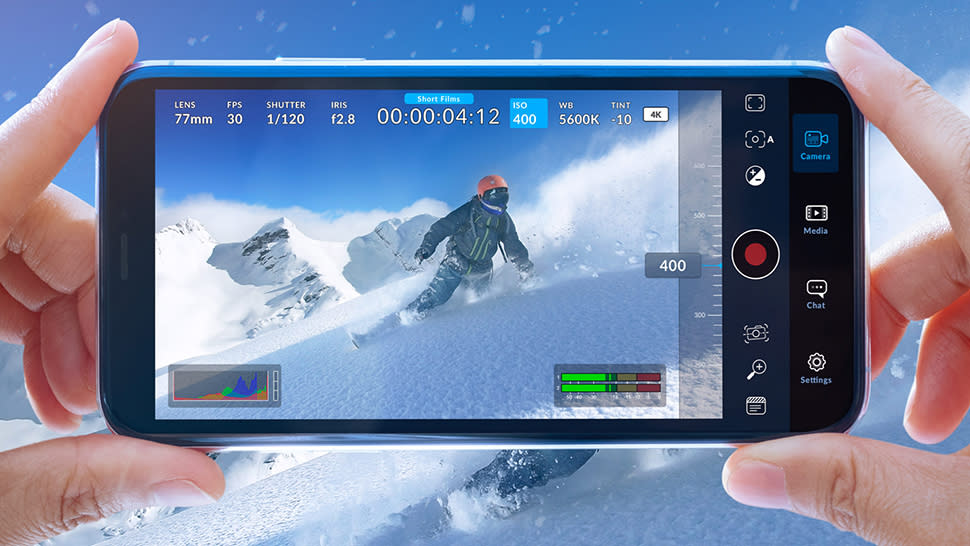Blackmagic Camera feels to me like a sign of things to come – and an exciting new direction for camera control

Every year, it feels as though we hear about some development in the world of technology that will ‘change photography or film-making forever’, whether it’s some fancy new phone with a 100MP+ camera sensor or a mirrorless camera with ‘all the Ks’-resolution video. Yet you may have noticed that, for the most part, the practical process of pointing your camera at your subject, pressing the shutter or record button and then editing the content at your computer hasn’t changed all that much.
However, one technological advancement that solves some key challenges has been yielding some positive results. Now, I know what you’re thinking: “The cloud isn’t new.” You’re right, it isn’t. Even File Transfer Protocol (FTP) on cameras, which gave photographers the ability to connect their cameras to the internet via a gigabit Ethernet connection, has been on cameras for over a decade. (It was the Canon EOS 1D-X that first introduced this capability when it was announced in 2011.) Before Ethernet ports on professional cameras, we had to rely on adapters or laptops with wireless dongles when working in the field – or hand our cards and hard drives to couriers to deliver content to picture desks and editors, just as we had to do with film.
Having an internet connection changed the workflows of professional photographers, and has continued to do so as the connection transitioned into the age of wireless functionality. But while uploading and editing still images via the cloud and social media has largely been solved, similar functionality for video has lagged behind. Using camera sync apps can be a frustrating affair, whichever brand of camera you use, so my hopes for improvements in the realm of video creation through an app have never been high.
However, while I was attending this year’s International Broadcasting Convention (IBC) in Amsterdam, I was introduced to Blackmagic Camera. Among the many exciting and fascinating pieces of kit on show, this new development could be a sign of a positive change to the current situation.
Blackmagic Camera isn’t actually a camera: it’s an app, created by Blackmagic Design, the company behind video editing software Davinci Resolve and some of the most innovative video-focused cameras on the market. The app isn’t designed to simply pair with your camera and give you wireless control, instead, it essentially turns the latest iPhones, including the recently released iPhone 15, into a Blackmagic camera.
Blackmagic Camera opens up an intuitive and approachable user interface, similar to that deployed by the company’s cine cameras. You get the benefit of video assist tools, such as zebra settings, focus assist, professional audio options and, of course, you can add your own 3D LUTs. It gives you total control over key camera settings, including lens choice, frame rate, shutter angle, ISO and white balance.
With the app, you can also take advantage of a new cloud storage and editing workflow that can upload up to 4K 10-bit Apple ProRes files captured with the iPhone directly to the editing platform, Davinci Resolve. From there, an editor can begin working on your content, anywhere in the world, as long as you both have a decent internet connection.
We’ve seen several apps over the years that unlock extra functionality in smartphones, such as VSCO Cam, but Blackmagic Camera is the most effective iteration of this approach I’ve seen to date. Because it’s from a major brand that is firmly established in the film industry, it feels like a definite sign of things to come – and an exciting new direction for camera applications and camera control in the coming months.
Read more of Jon Devo's Scanning Ahead blogs
Read more:

